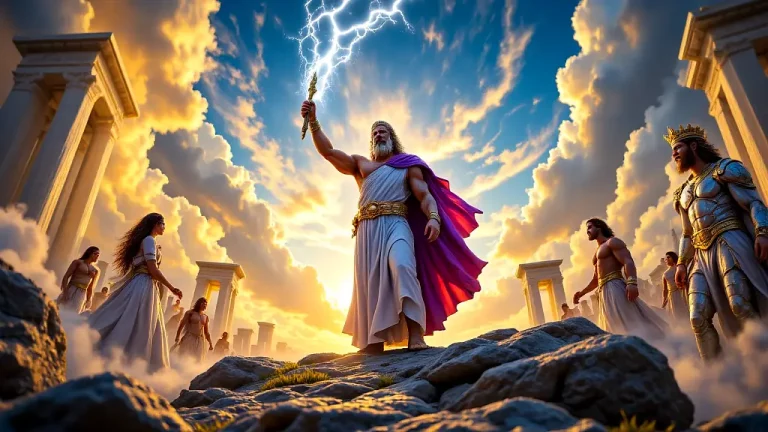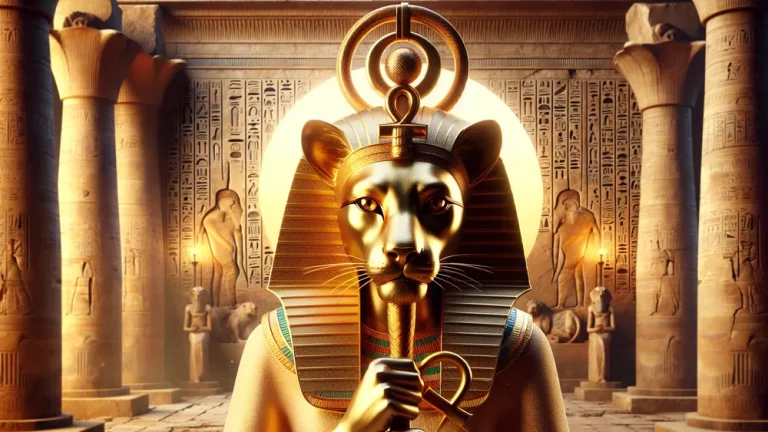Iah: Ancient Egyptian Deity Of Time And The Moon
In the big mix of old Egyptian stories, gods and goddesses were super important for how people lived and thought. One of these gods, Iah, is pretty cool but not talked about much. He’s all about the moon and time. This blog post is going to look at where Iah came from, what he did, and how he was shown in art.
Key Points:
- Iah is an ancient Egyptian deity linked to the moon and time.
- He was crucial in the Egyptian lunar calendar and agricultural cycles.
- Iah was often shown in art with a lunar disk on his head and crescent moon symbols.
- Temples dedicated to Iah were found in major cities like Thebes and Karnak.
- He influenced Egyptian astronomy through the lunar calendar.
- Iah had connections with other moon gods like Thoth and Khonsu.
- Stories about Iah involved myths of measuring time and guiding souls in the afterlife.
We’ll see how he affected Egyptian culture, art, and even their understanding of the stars. By looking at the history and stories about Iah, we want to show why he mattered so much among the Egyptian gods and how he still sticks around in history. Oh, and did you know? He’s got some really interesting connections with other gods too!
Iah: Overview and Key Facts
| Thing | Details |
|---|---|
| Name | Iah (sometimes Yah or Aah) |
| Job | Moon god and time god |
| Symbols | Moon, moon disk, crescent moon |
| First Mentions | Writings from the Middle Kingdom (around 2055-1650 BCE) |
| Buddy Gods | Thoth, Khonsu |
| Looks Like | Usually a guy with a moon disk on his head |
| Worship Spots | Temples in Thebes, Karnak, and other big cities |
| Why He Matters | Connected to the lunar calendar, farming cycles, and keeping track of time |
| Stories | Involved in different myths, often about measuring time |
| Star Role | His moon phases were used to mark time and big events in the lunar calendar |
| Art Stuff | Moon symbols, often shown with a staff or scepter |
| Rituals | Included offerings, prayers, and watching the moon |
| Historical Impact | Helped develop Egyptian astronomy and timekeeping |
| Other Moon Gods | Like other moon gods in different cultures, such as the Greek Selene |
This table gives a detailed look at Iah, showing his main traits, jobs, and why he was important in old Egyptian culture and myths. It’s all about understanding how he fit into their world.
The Origins of Iah
To really get why Iah was a big deal, we gotta look at where he came from and how he fit into ancient Egyptian life. So, let’s jump into his beginnings and see what he was all about.
Historical Background of Iah
Picture yourself in ancient Egypt, around 2055-1650 BCE, during the Middle Kingdom. This was a time when pharaohs ruled with an iron fist, and the culture was buzzing with stories and gods. Iah, the moon god, showed up in this lively setting. It’s like when a new character joins your favorite TV show, adding more layers and excitement.
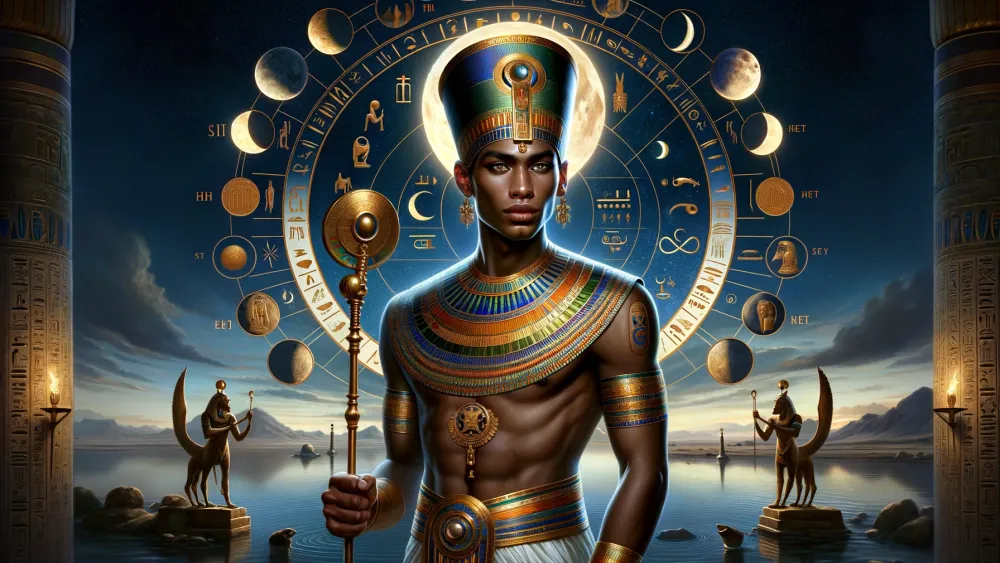
The earliest mentions of Iah are found in old texts from this period, like how you might find a character’s first appearance in an early episode. These texts, written on papyrus or carved into stone, show that Iah was already important back then. They didn’t have Netflix, so they told stories through hieroglyphs and temple carvings.
Iah was linked to the moon and time, which were crucial for their daily lives, like how we rely on clocks and calendars today. It’s fascinating to see how they wove these deities into their understanding of the world. Oh, and by the way, I once tried to read hieroglyphs at a museum – it’s like trying to decode an ancient comic strip!
Iah, the moon god, played a crucial role in ancient Egyptian society during the Middle Kingdom, being intricately linked to time and the moon, elements essential to their daily lives.
Iah’s Role in Egyptian Mythology
Iah was a big deal in the Egyptian pantheon, like a key player in a sports team. He was the moon god, and he also had a hand in controlling time. Imagine him as the guy who not only lights up the night sky but also keeps the calendar ticking. The moon was super important to the Egyptians because it helped them track time and plan their farming.
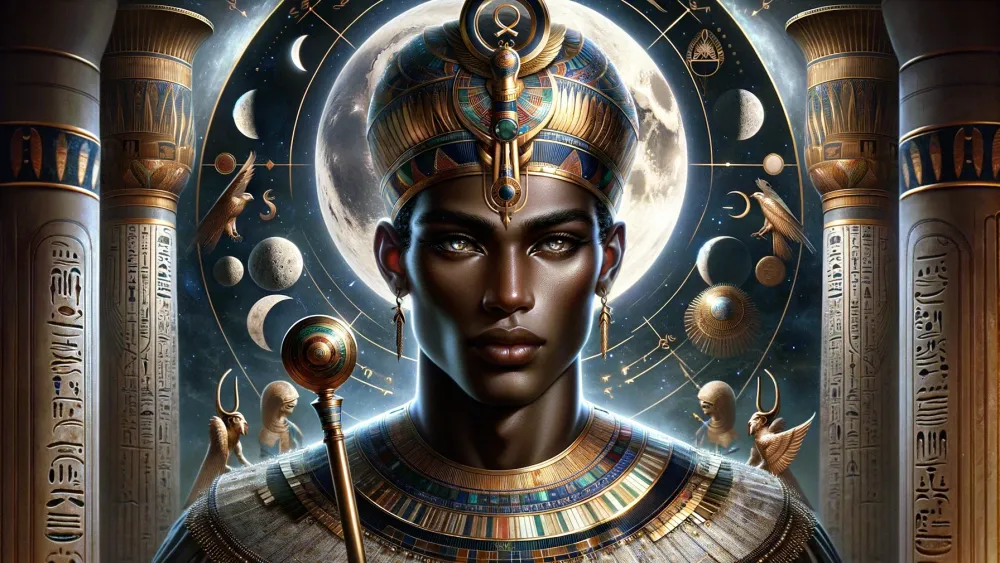
Iah was like their cosmic clock. Now, he wasn’t the only moon god around. There were others like Thoth and Khonsu. Thoth was the god of wisdom and writing, and he also had moon duties. It’s like having two people in charge of the same project but with different skills.
Khonsu, on the other hand, was more of a healer and protector, also linked to the moon. So, while Iah was all about the moon and time, Thoth and Khonsu had their own moon-related gigs. It’s like how different apps on your phone can all tell time but have other features too. Oh, and speaking of time, I once tried to use an ancient sundial.
Let’s just say it didn’t go well!
Iah, Thoth, and Khonsu were all Egyptian gods with moon-related roles, serving different purposes like timekeeping, wisdom, healing, and protection, each contributing uniquely to the culture.
Iah’s Depiction in Art and Symbolism
Alright, so we’ve talked about Iah’s role among the gods. Now, let’s jump into how the ancient Egyptians brought him to life through their art and symbols.
Iconography of Iah
Iah often shows up in ancient Egyptian art as a man with a lunar disk on his head, which is like wearing a moon hat. This disk sometimes has a crescent moon underneath it, making it look like a fancy headpiece. The Egyptians loved their symbols, and these moon shapes were super important.
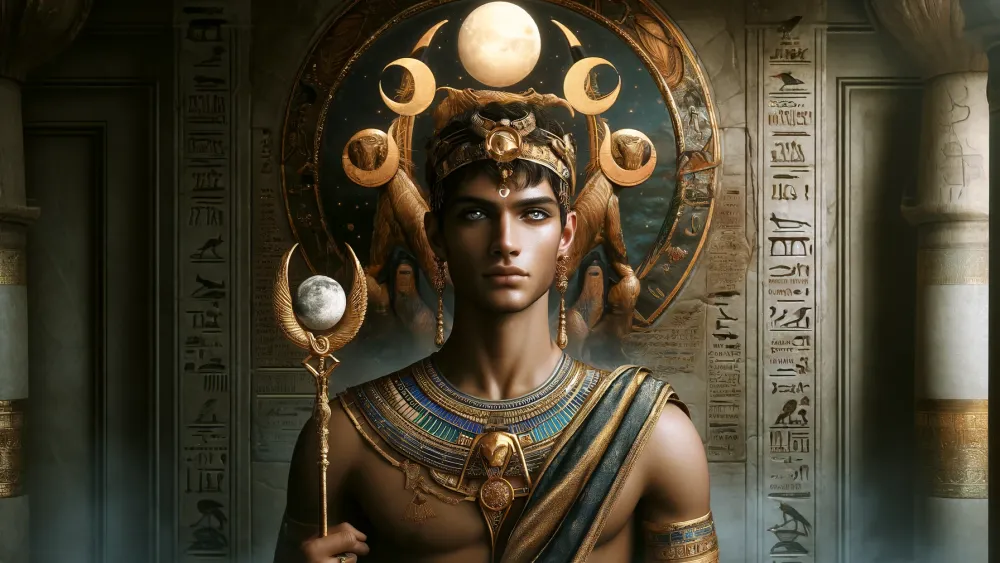
They believed the moon was a big deal for keeping track of time and guiding their daily lives. Imagine using the moon as your calendar! Iah also sometimes holds a scepter, which is like a royal staff, showing his power and authority. These symbols weren’t just for decoration; they told stories and conveyed deep meanings.
It’s like how emojis can say a lot with just a tiny picture.
Temples and Worship Sites Dedicated to Iah
You could find temples for Iah in places like Thebes and Karnak, which were like the big cities of ancient Egypt. These temples were massive, with tall columns and huge courtyards. Imagine walking through a giant stone maze with carvings and statues everywhere. The walls were covered in hieroglyphs and images of gods, including Iah with his moon hat. People would come to these temples to perform rituals and ceremonies.
They would offer food, drink, and other gifts to Iah, hoping for his blessings. Priests would chant prayers and light incense, filling the air with sweet smells. It’s like going to a big festival but with more ancient vibes.
Iah’s Influence on Egyptian Culture
So, we’ve checked out where folks worshipped Iah and what they did there. Now, let’s see how he left his mark on Egyptian culture in all sorts of ways. From stories to star-gazing, Iah’s touch was everywhere.
Iah in Egyptian Literature
Ancient Egyptian texts and inscriptions often mention Iah, especially when they talk about the moon and time. One famous myth tells how Iah helped the god Thoth win five extra days for the calendar because they played a game of dice with the moon. This story shows how cleverness and strategy were valued in Egyptian culture.
Another tale involves Iah guiding the souls of the dead through the underworld, which emphasizes the importance of the moon in the afterlife. These stories weren’t just for entertainment; they taught people about the values and beliefs of their society.
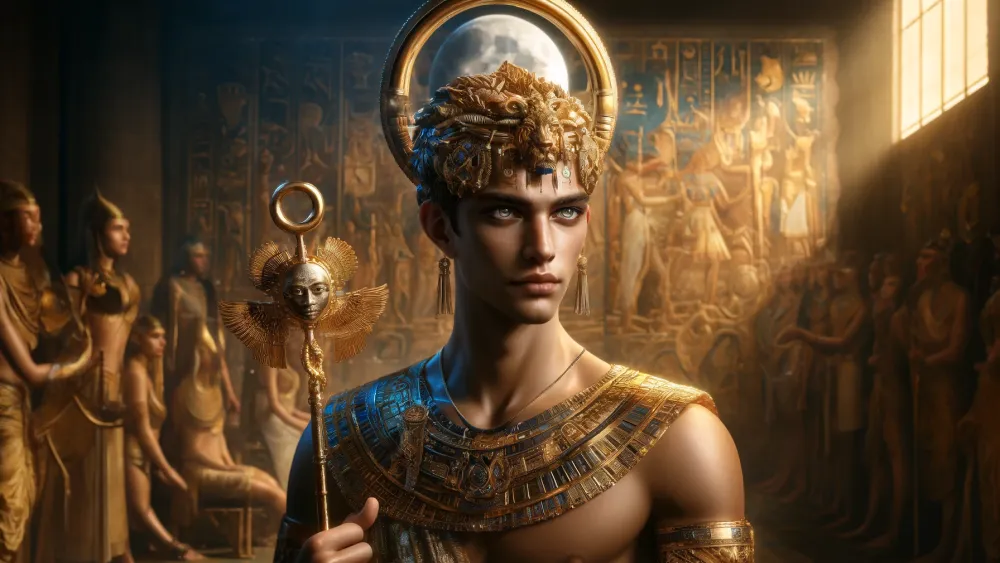
It’s like how fairy tales today teach kids about good and evil. I remember reading one of these myths in a dusty old book at the library, and it felt like stepping back in time.
The Role of Iah in Egyptian Astronomy
Iah was super important in ancient Egyptian astronomy because he was all about the moon. The Egyptians used a lunar calendar, which means they tracked time based on the moon’s phases. This calendar was crucial for their society because it helped them plan agricultural activities like planting and harvesting. Imagine trying to grow crops without knowing the best times to plant and harvest!
They looked at Iah’s phases to mark different times of the month, which was like their version of a calendar app. It’s kind of like how we use the moon to know when to expect high tides. I remember once trying to follow the moon phases for a month, and it was surprisingly tricky! But for the Egyptians, it was second nature.
The Egyptians relied on the lunar calendar, guided by Iah’s phases, to determine optimal times for agricultural activities like planting and harvesting.
Iah’s Relationship with Other Deities
Alright, so we’ve talked about Iah and astronomy. But what about his buddies, the other gods? Let’s see how he got along with Thoth and Khonsu. It’s a wild ride!
Iah and Thoth
Iah and Thoth, both lunar deities, had some interesting overlaps and differences. Iah was all about the moon and time, while Thoth, who also had lunar connections, was the god of wisdom, writing, and magic. Think of Iah as your calendar app, keeping track of days and months, and Thoth as your notes app, full of knowledge and ideas. They were sometimes worshipped together because their domains overlapped, especially when it came to the moon.
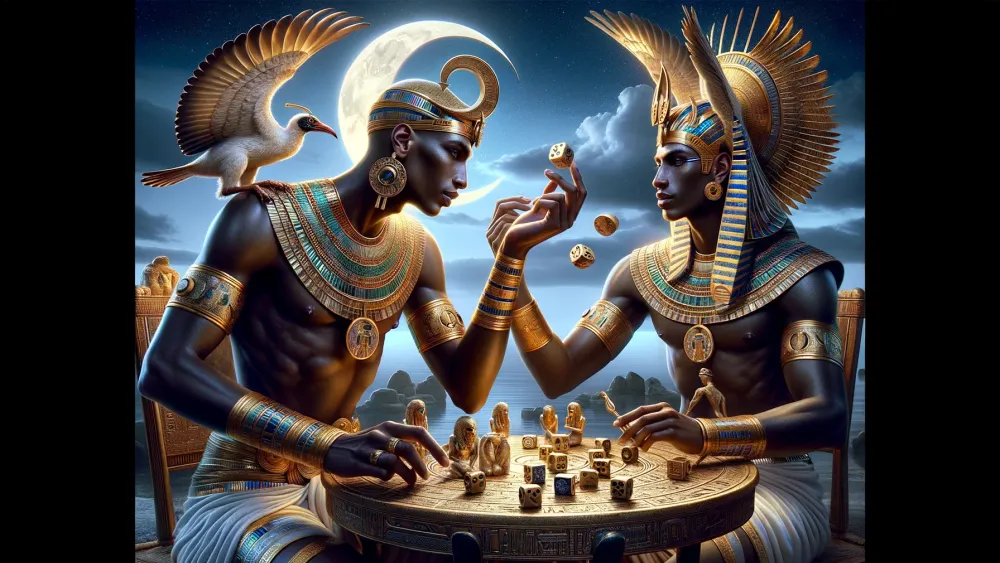
But they also had distinct roles. Iah was more about the physical moon and its phases, while Thoth was about the intellectual and mystical aspects. It’s like how you might use a clock to tell time but a book to gain wisdom.
So, while they shared some common ground, they each had their own unique vibe.
Iah and Khonsu
Iah and Khonsu, both moon gods, had some cool similarities and differences. Iah was like the steady, reliable moon calendar, marking time and guiding agricultural cycles. Khonsu, on the other hand, was more of a dynamic moon god, associated with healing and protection during the night. Imagine Iah as your trusty wall calendar, always there, while Khonsu is like a nightlight, offering comfort and safety.
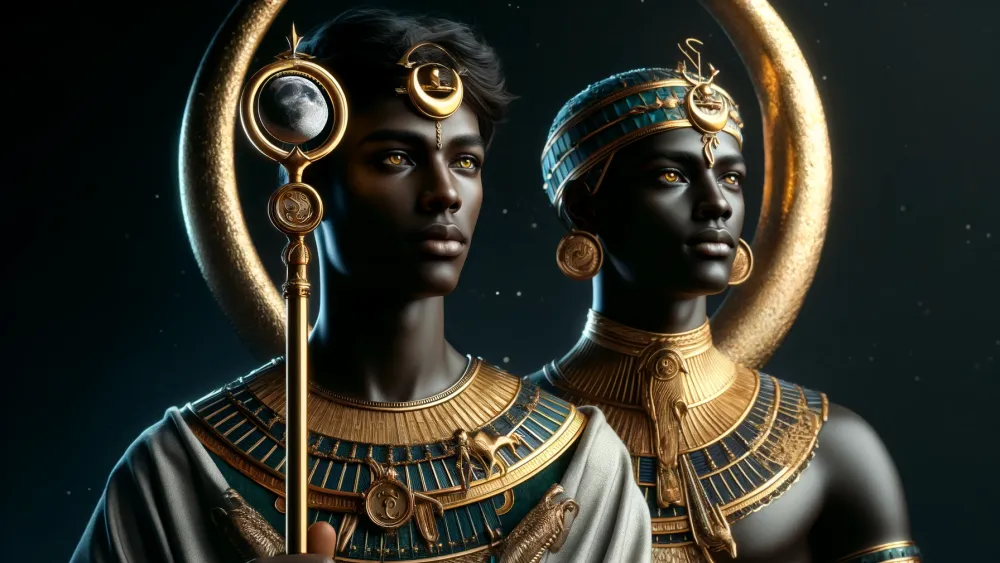
They both had lunar connections, but their roles were quite distinct. There are myths where Khonsu travels across the night sky, battling evil spirits, while Iah is more about the consistent phases of the moon.
It’s like having one friend who’s always there to help you plan your week and another who’s got your back during tough times.
Pantheon of Egyptian Mythology Gods
When you dive into Egyptian mythology, you find a huge mix of gods and goddesses, each with their own stories, roles, and symbols. Ra, the sun god, is super powerful, while Anubis, the god of mummification, is mysterious. The pantheon is rich and diverse. If you’re curious to explore the full list with all Egyptian gods, check out this list of all the Egyptian gods.
This resource provides a comprehensive overview of the deities that shaped ancient Egyptian culture and religion.
FAQs
1. Who was Iah in ancient Egyptian mythology?
Iah in ancient Egyptian mythology was a deity associated with the moon and time.
2. How was Iah depicted in ancient Egyptian art?
Iah was depicted in ancient Egyptian art as a man with a lunar disk and crescent moon on his head.
3. What was the significance of Iah in Egyptian culture?
The significance of Iah in Egyptian culture lies in his association with the moon and the measurement of time, which were crucial for agricultural and religious practices.
4. How did Iah influence the Egyptian understanding of time and astronomy?
Iah influenced the Egyptian understanding of time and astronomy by being associated with the lunar calendar, which was crucial for marking time and agricultural cycles.


